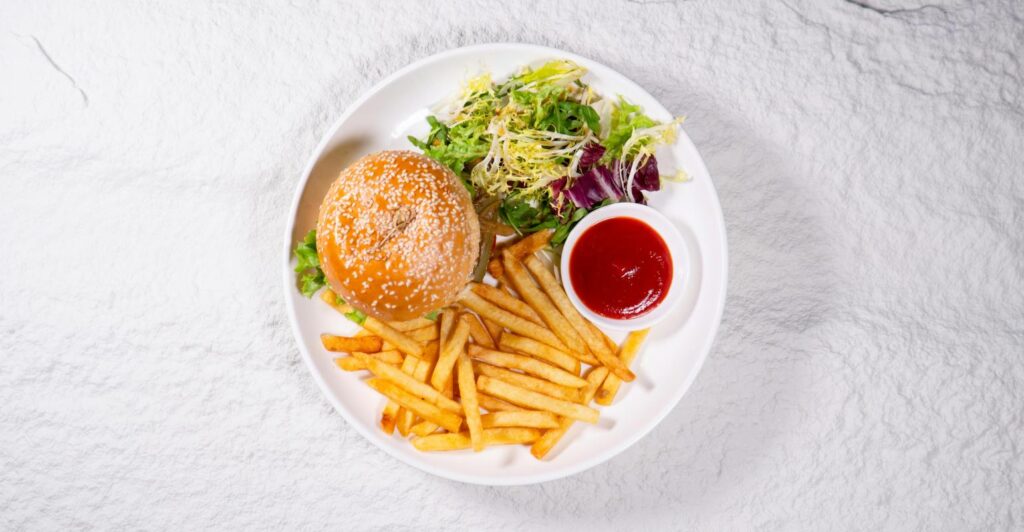Fast casual is winning the value perception battle
Despite intensifying promotional activity among quick-service restaurant, consumers continue to trade up or out of that category.
03 October 2024
Share this exclusive content from Saladplate

Photo Credit: Pexels / Change C.C
Earlier this year, data pointed to the fast casual segment’s insulation from a swiftly softening consumer environment. That environment has lingered well into the third quarter, and it seems as though fast casual has maintained its edge over the quick-service category for frugal consumers.
On paper, this may come as a bit of a surprise amid a growing promotional QSR environment that has spawned $5 deals, $1.99 menus, and everything in between. But of course, “value” means more to consumers now than just price, and includes speed, convenience, quality, abundance, and more. This holistic offering is likely where fast casual is finding its groove for conservative spenders – according to traffic data from Placer.ai, fast casual restaurants outperformed QSRs in the first half of 2024 with 3.2% year-over-year visit growth, compared to just 0.4% for QSR.
Fast casual concepts also performed well on weekdays, with a 2.8% increase versus last year, compared to a decline of -0.2% for QSRs. Placer.ai believes this weekday tailwind in favor of fast casual concepts is driven by more affluent consumers returning to the office. A higher percentage of fast casual visits (nearly 64%) originated from between two and 30 miles away, versus about 57% of visits to QSRs. According to a recent survey from Resume Builder, 90% of companies plan to implement some type of return-to-office policy by the end of this year.
What’s perhaps most remarkable about the segment comparison is that both fast casual and QSRs captured consumers in households earning between $75,000 and $100,000, suggesting that the playing field has been leveled as consistently rising QSR prices have narrowed the cost gap with fast casual. Simultaneously, lower-income consumers are increasingly choosing to eat at home, eroding a major traffic advantage for QSRs, which typically overindex with such consumers.
That said, this is generalized data and there are several fast casual concepts navigating challenges at the moment – BurgerFi, Panera, and Dickey’s Barbecue Pit come to mind. But for the most part, it’s full speed ahead for the category as it’s been able to establish a bang-for-your-buck value proposition courtesy of players like Wingstop, Chipotle, CAVA, and Sweetgreen. In a note, William Blair analyst Sharon Zackfia wrote, “Promotional intensity has increased as concepts that have traditionally competed on price have proved more vulnerable to consumer pushback after several years of outsized price hikes, while those competing more on quality and service remain relatively unscathed. By subsector, sales trends have fared best in fast casual, which appears to be benefiting from both trade-down from casual dining and trade-up from fast food as the pricing gap has narrowed. As a result, quick service has posted five straight quarters of decelerating comp trends, despite historically being the most resilient industry subsector.”
What’s changed for QSR? Perception. To reiterate, discerning customers want much more than just value menus now, perhaps the result of a more mature fast casual segment offering such an alternative. Consider that although McDonald’s, the quick-service bellwether, experienced a traffic uptick and some market share gains from its $5 Meal Deal launch in late June (and subsequent extension), it had a lot of ground to make up; the chain’s price perception has fallen by a staggering 16% year-over-year, according to new data from HundredX.
Some of that perception problem likely came from false rumors proliferating on social media accusing the chain of hiking prices by 100% since 2019 (the cost of a Big Mac is actually up about 21%). But the index for limited-service meals remains 4.3% higher over the last 12 months, versus grocery prices, which are up just 0.9%, and the overall Consumer Price Index, which was up by 2.5% in August.
Given its massive scale, McDonald’s tends to bear a lot of the perception brunt for QSR pricing. HundredX data shows that the net purchase intent score has fallen by 3% at the chain, versus remaining flat for competitors, while customer perception for value is down 7% year-over-year for McDonald’s.
Casual dining earns some value perception chops
Perhaps another challenge for QSRs is that casual dining seems to be making up some ground on value perception likely driven by promotions such as Olive Garden’s Never-Ending Pasta Bowl, IHOP’s 2 x 2 x 2 menu, and Chili’s 3 For Me menu.
New data from YouGov shows that the value score of casual dining restaurants was 7.8 in September, versus 5.2 for QSRs. Olive Garden had the highest score for “value for money” among U.S. adults, with a score of 25.8, followed by Domino’s (25.2), and Cracker Barrel (22.9). IHOP was fourth with 21.7, while Denny’s was ninth with 20.2. Wendy’s (20.6) is the only traditional QSR in the top 10, joining Pizza Hut (20.9) and Little Caesars (19.5), and specialty concepts Dairy Queen (21.2) and Dunkin’ (20.6).
Even the list for most improved brands for value was void of QSRs. Starbucks came on top with a 5.4-score jump year-over-year, followed by The Cheesecake Factory (4.0), Chuck E. Cheese (4.0), First Watch (2.9), Pizza Hut (2.6), Chili’s (2.6), Donatos (2.5), Papa Johns (2.4), Bahama Breeze (2.2), and Smoothie King (2.0).
Notably, Starbucks’ improvement wasn’t enough to nudge it from the top spot of “poorest value restaurants,” a list with plenty of QSRs. Following Starbucks, brands identified as “poor value for the money” include Chuck E. Cheese, Hooters, Dave and Buster’s, Topgolf, Long John Silver’s, Quiznos, Carl’s Jr., Wienerschnitzel, and Hardee’s.

Source: Nation’s Restaurant News



